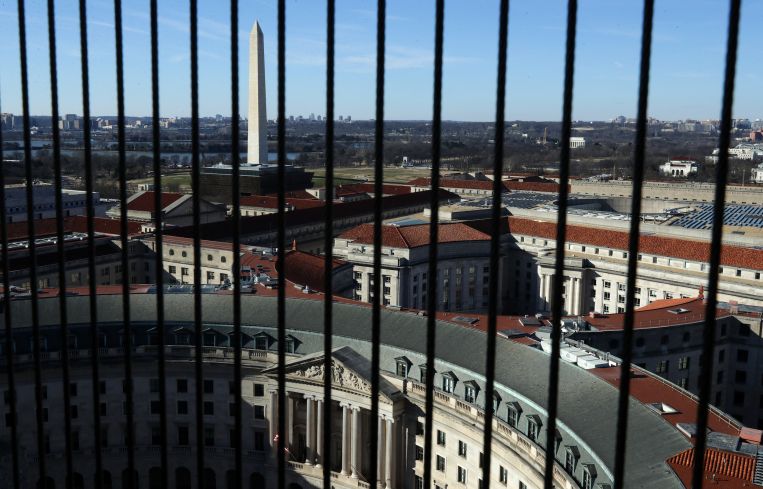Nearly Two-Thirds of Federal Workers on Hybrid Schedule: Survey
Even as Biden pushes for more return to office, most government employees stay home two or three days a week
By Jacob Gardenswartz April 30, 2024 3:45 pm
reprints
Despite growing pressure from President Joe Biden and other government leaders for workers to return to the office, a new survey of federal employees shows a large majority still work on a hybrid schedule — and view their in-person work settings poorly.
Conducted by Federal News Network, a D.C.-based digital and AM radio news source focused on Federal government agencies, the survey fielded in early April garnered 6,338 responses from current federal employees. Thirty percent of respondents said they worked entirely remotely, 6 percent worked entirely in person, and the remaining 64 percent pursued a mix of telework and in-the-office duties.
Moreover, a majority of workers indicated that they viewed the push to return to the office poorly. More than half (56 percent) said their senior leaders had not “clearly explained the purpose” of returning to in-person work, and two-thirds argued they’re less productive in the office than they are working at home.
“We proved how beneficial and productive a modern telework environment can be,” one survey respondent wrote. “Why would I want to go back to the ‘old way’ of doing things that is obviously a relic of the past?”
Workers pointed to difficult commutes and a lack of “peace and quiet” in the office as some reasons for their disinterest in returning to in-person work. Agency-led efforts to boost collaboration received mixed feedback; “core collaboration days” designed to boost staff productivity and collegiality were often viewed as neutral or negative, with more than 40 percent of respondents suggesting collaboration days hurt staff morale.
Most employees, meanwhile, viewed the push to return to the office as politically or economically motivated, suggesting their leaders were responding to pressure from Congress or other stakeholders hoping to revitalize downtown areas where many federal buildings are headquartered.
Indeed, lawmakers in Washington have ramped up efforts to force federal workers back to the office, probing agencies for more data on teleworking employees and mandating they submit “action plans” detailing agencies’ in-office requirements. In early 2023, the Republican-led House passed HR 139 — dubbed the “SHOW UP Act” — requiring federal agencies to reinstate policies in place before the COVID-19 pandemic that limited teleworking. To date, the Senate has yet to take up the measure, though Republican lawmakers have harshened their rhetoric on the topic.
“You have bureaucrats that are doing bubble baths during their conference calls for work,” Sen. Joni Ernst, an Iowa Republican, told reporters late last year. “So you federal employees that are out there, we’re coming after you.”
Ernst and Democratic co-sponsor Sen. Gary Peters (D-Mich.) recently introduced a new Senate measure to increase transparency and oversight of federal teleworking policies. Biden and congressional Democrats, for their part, have largely toed the line, seeking to woo workers back to the office and revitalize downtown spaces without angering federal employee unions with whom they’re often aligned.
Last April, the White House Office of Management and Budget issued a memo to the heads of federal agencies ordering more documentation of telework policies and pushing leaders to increase “meaningful” in-person work opportunities but stopping short of a return-to-work mandate.
Yet, state and local leaders have been some of the loudest advocates for federal workers to return to the office, regardless of their political affiliation.
“We need decisive action by the White House to either get most federal workers back to the office most of the time or to realign their vast property holdings,” Democratic Washington, D.C., Mayor Muriel Bowser said during her third inaugural address last year.



